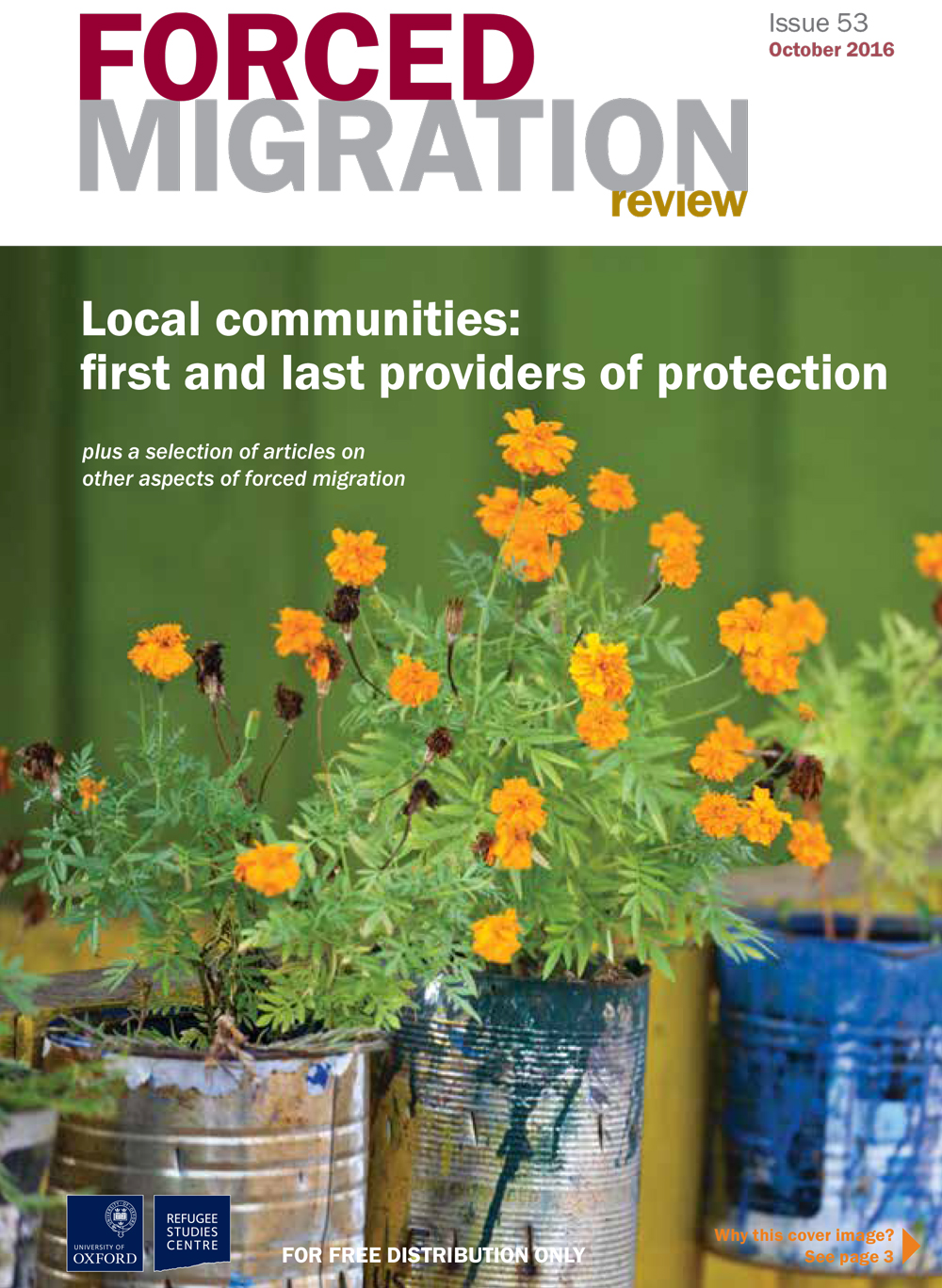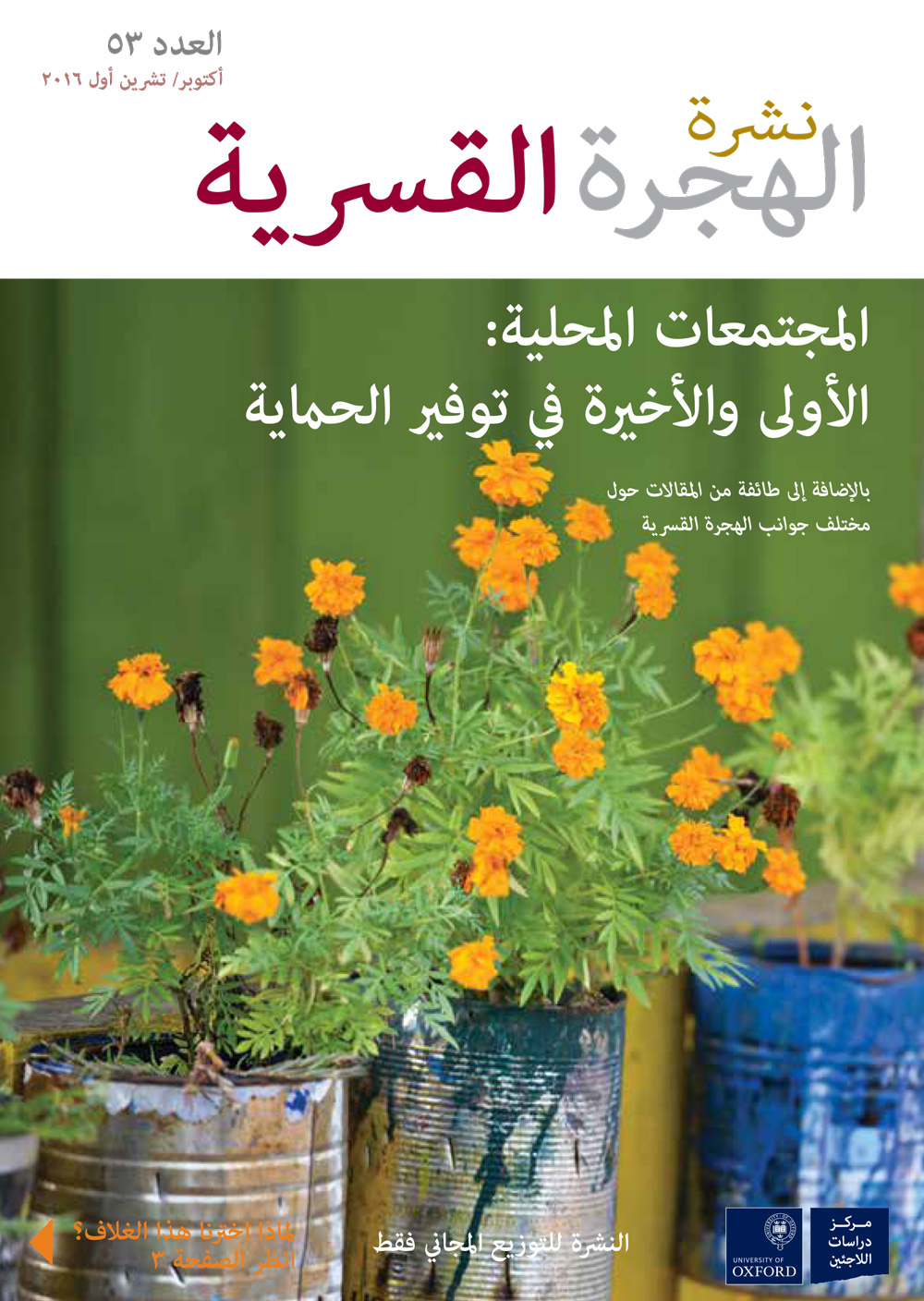From the Editors
It is often people’s immediate community that provides the first, last and perhaps best tactical response for many people affected by or under threat of displacement. However one defines protection or community, external actors will struggle to provide appropriate support…
Understanding and supporting community-led protection
In recent years, there has been growing evidence of the effectiveness of locally led protection strategies and actions… A local women’s association in Sudan advises communities on how to seek protection in foxholes or mountain caves to escape aerial bombardments.…
Challenging the established order: the need to ‘localise’ protection
In 1977 Pierre Bourdieu wrote that “every established order tends to make its own entirely arbitrary system seem entirely natural”.[1] In the case of humanitarian protection, that established order has been made up since 2005 of the cluster approach, with…
Filling the funding gap for community protection
One of the main obstacles to communities organising to protect themselves is a lack of funding. Often they have a better understanding than outsiders of what the challenges may be, and have innovative ideas for overcoming them, but they lack…
Women-led self-protection in Sudan
Since the outbreak of civil war in 2011 in Sudan’s South Kordofan and Blue Nile states, the civilian population has experienced intense aerial bombardment and ground attacks. At least 4,082 bombs and missiles have hit predominantly civilian targets including villages,…
“This group is essential to our survival”: urban refugees and community-based protection
The ‘communities’ at the heart of community-based protection are not predetermined. Communities can cohere around any number of shared characteristics, and be more or less inclusive or exclusive depending upon their own internal social norms and power dynamics. Ensuring that…



